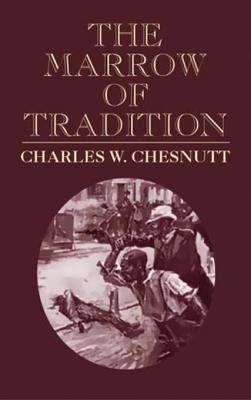7.6 /10 1 Votes7.6
Language English OCLC 939418 Publisher Houghton Mifflin Harcourt | 3.8/5 Goodreads Publication date October 1901 Originally published October 1901 Genre Historical novel Country United States of America | |||||||||||||||||||||||||||||||||
 | ||||||||||||||||||||||||||||||||||
Media type Print (hardback & paperback) Characters Major Carteret, Captain McBane, Olivia Carteret Similar Charles W Chestnutt books, African Americans books | ||||||||||||||||||||||||||||||||||
The marrow of tradition
The Marrow of Tradition (1901) is a historical novel by the African-American author Charles W. Chesnutt, set at the time and portraying a fictional account of the Wilmington Insurrection of 1898 in Wilmington, North Carolina.
Contents
Plot introduction
This story is a fictional account of the rise of the white supremacist movement, specifically as it contributed to what was originally referred to as the "race riots" that took place in Wilmington, North Carolina in 1898. Critics argue over what would be a more proper term; some favor "massacre" while a North Carolina state commission ruled that it was a coup d'etat, the only overthrow of a legitimately elected government in United States history. Whites attacked and killed blacks in the city and overthrew the county government, establishing white supremacists in power.
Chesnutt anticipated the book would "become lodged in the popular mind as the legitimate successor of Uncle Tom's Cabin... as depicting an era in our national history". The book was poorly received in the South and received mixed reviews in the North. It ultimately sold only 3,726 copies in its first year.
Plot summary
Set in the fictional town of Wellington, The Marrow of Tradition features several interweaving plots that encompass the poles of the racially segregated society of the American South at the turn of the century. One plot follows Major Carteret, the white owner of the major Wellington newspaper, as he colludes with several other powerful white men to take political control of the town. They are outraged about a provocative editorial published in a black paper that questioned white justifications for lynchings. As the town’s unrest intensifies, Carteret faces domestic pressures; his only child Dodie and wife Olivia are both unwell. Carteret’s niece Clara, recently introduced to society, is courted by the young Tom Delamere, a handsome and conniving aristocrat who spends most evenings nurturing his penchant for drink and cards. His habits are contrasted with those of Lee Ellis, a rival for Clara, and William Miller, a young black physician who with his wife has returned to his hometown of Wellington to practice medicine. He gained his medical education in Paris and Vienna. Though jarred by segregation and Jim Crow racism, Miller sets up his practice and starts his life. Miller's wife, Janet, is the mulatto half-sister of Mrs. Olivia Carteret; Janet spends her entire life hoping to be acknowledged by her white sister, who is too proud to accept her father's miscegenation after her mother died. Josh Green as a boy witnessed the murder of his father at the hands of a white man—a character named Captain McBane—and is intent on exacting revenge.
All these subplots are forced to a crisis through two events: the murder of a white woman, Polly Ochiltree, for which a black servant, Sandy Campbell, is accused, and county elections. Campbell would have been lynched and burned without a trial if it weren't for Miller alerting his boss, the grandfather of the actual murderer, Tom Delamere. Old Mr. Delamere and Lee Ellis discover the truth and save Sandy's life, but Tom is never apprehended for his crime. A few months later, on the eve of the elections Major Carteret, Captain McBain, and one General Belmont conspired to incite a "revolution," overthrowing the Republican party from power and keeping blacks from participating in the elections. They published inflammatory statements in the Morning Chronicle and the revolution quickly became a riot which engulfed the town.
The novel culminates with justice for some—the faithful servant Campbell is saved by his patron, Delamere falls from grace, Josh Green avenges his father's death albeit at the cost of his own life, and Janet Miller gains recognition from her sister, who, along with Major Carteret, was humbled to respect the black Miller family in order to save an ailing Dodie.
Major themes
The novel was written in direct refutation of many of sensationalized accounts of the "race riot" in Wilmington. These accounts included inaccurate news reports and a series of white supremacist novels. These accounts were the only ones available to readers in the North, whose knowledge was limited to what was readily available in print.
Chesnutt himself reflected on the book in 1905, answering a letter on behalf of a high school student: "The book was received by the public with respect, but not with any great enthusiasm. By the public I mean the great reading public whose opinion is reflected by the newspapers and magazines which reflect public opinion. It had a fair sale, but was criticized as being bitter. I did not intend it to be so. Nor do I think it was."
